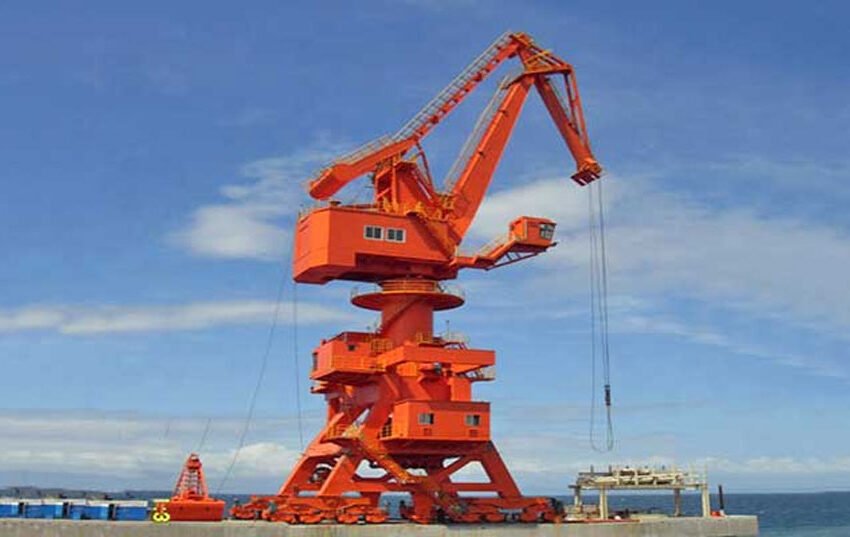Hoist Duty Classification: Understanding Load Ratings for Safe Lifting

Understanding Hoist Duty Classification
Hoist duty classification is crucial for selecting the right hoist for your tasks. It provides a clear picture of how often and how heavily a hoist can be used. This section includes key concepts, the importance of hoist duty ratings, and an overview of duty cycles.
Key Concepts of Duty Classification
Duty classification includes two main factors: the total duration of use and the load spectrum factor. The total duration is noted by numbers 1 to 4, indicating how long the hoist will be in operation.
The load spectrum factor uses letters (Am, Bm, Cm) to represent the average weight lifted compared to the hoist’s rated capacity. For instance, a load spectrum factor like Am signifies lighter loads, while Cm indicates heavier loads. Understanding these concepts ensures you choose a hoist that meets your specific needs.
Importance of Hoist Duty Ratings
Hoist duty ratings help you determine if a hoist is suitable for your work. These ratings are designed to match the hoist to its intended use, ensuring safety and efficiency. Using the wrong hoist can lead to equipment failure or accidents.
Each duty rating takes into account the work cycles your projects require. A hoist rated M3 is suitable for less intense duties, while M8 is designed for very heavy or continuous loads. Knowing these ratings is essential for making an informed choice.
Overview of Duty Cycles
Duty cycles define how a hoist operates over a given time. They categorize lifting tasks based on usage frequency and load weight. A cycle can include lifting loads, lowering, and idle time.
You can break down the safe working period into segments, like starting frequency and operating time. This helps in understanding how long the hoist can function without risking damage. Properly assessing duty cycles ensures the longevity and safety of your hoist.
In summary, understanding these classifications helps you choose the right hoist for your projects.
Industry Standards and Guidelines
When working with hoists and cranes, it is essential to understand the industry standards and guidelines that ensure safety and performance. These standards help you choose the right equipment for your needs, ensuring proper usage and longevity.
CMAA and FEM Duty Ratings
The Crane Manufacturers Association of America (CMAA) and the European Federation of Materials Handling (FEM) provide key duty ratings for cranes and hoists. The CMAA has classified hoists into service classes based on their usage frequency and load handling.
- CMAA Classes:
- Class A: Light service
- Class B: Moderate service
- Class C: Heavy service
- Class D: Severe service
FEM also defines duty classifications, focusing on load types and environmental conditions. You can use these classifications to select suitable equipment for specific applications, improving efficiency and safety.
ISO and ASME Classifications
The International Organization for Standardization (ISO) and the American Society of Mechanical Engineers (ASME) set internationally recognized standards for hoists. The ISO developed standards that define aspects like safety, strength, and usability.
- ISO Classifications:
- Focus on operational reliability.
- Include detailed specifications for hoist design.
ASME standards address the overall performance and safety of lifting equipment. The ASME Hoist Duty Classification offers a structured way to evaluate hoist suitability based on job conditions and expected loads.
HMI, ANSI, and AIST Standards
The Hoist Manufacturers Institute (HMI), American National Standards Institute (ANSI), and Association for Iron & Steel Technology (AIST) also play important roles in setting standards.
HMI provides guidelines on safe hoist operations and encourages best practices. ANSI standards ensure that lifting equipment meets certain safety and performance criteria.
AIST specifically focuses on applications within iron and steel industries. By following these standards, you can ensure that your equipment meets safety and operational requirements, reducing risks in the workplace.
Classes of Hoist Duty
Hoist duty classifications help you understand how different hoists can handle loads based on their usage. Knowing these classes will guide you in choosing the right hoist for your needs.
Light Duty and Infrequent Usage
Light duty hoists are designed for low-stress tasks. These hoists handle light loads and are often used in maintenance or occasional lifting applications.
Key Features:
- Ideal for capacities that are rarely above a few tons.
- Commonly seen in small workshops or for home use.
- Operating time is minimal, with infrequent use.
It is important to match the hoist’s capabilities to your tasks. If your load does not exceed 1,000 pounds and is lifted only occasionally, then a light duty hoist may be just right for you.
Moderate Duty and General Service
Moderate duty hoists are built for regular use with heavier loads. These hoists can manage loads that range between a few tons and more.
Key Features:
- Suitable for manufacturing and construction sites.
- They can operate several hours a day without issues.
- Regularly handle loads requiring stability and safety.
You should consider a moderate duty hoist if your operation involves general lifting and you handle loads regularly. These hoists strike a balance between capacity and frequency of use.
Heavy Duty and Severe Service
Heavy duty hoists are crafted for tough jobs. They can manage heavy loads and operate many hours each day under challenging conditions.
Key Features:
- Built for continuous service with high load capacities.
- Often found in heavy construction and industrial areas.
- Designed to withstand rugged environments.
Using a heavy duty hoist is essential if you regularly lift heavy equipment or materials in demanding conditions. These hoists are built to last and ensure reliable performance.
Understanding Duty Classes A1, B, C, D, E, H3, H4, H5
Duty classes categorize hoists into levels based on their specific applications. Here’s a quick look at these classifications:
- Duty Class A1:Light loads and infrequent use.
- Duty Class B:Moderate loads, regular use, and minimal wear.
- Duty Class C:Suitable for heavier lifting, more demanding environments.
- Duty Class D:Designed for heavy lifting, continuous use, and higher wear.
- Duty Class E:Extremely heavy loads with high frequency in severe conditions.
- H3, H4, H5:These classes represent increasing capacities and operational demands.
Choosing the correct duty class is crucial. It ensures that your hoist will perform safely and efficiently for your specific needs. Always assess your requirements before making a choice.
Factors Affecting Hoist Duty Classification
Several key factors influence the duty classification of hoists. Understanding these factors can help you choose the right equipment for your specific needs.
Operating Time and Average Daily Usage
Operating time is a crucial factor in determining hoist duty classification. It refers to how many hours per day the hoist is in use.
You should consider your average daily operating time. For example, if you’re using the hoist for 4 hours a day, it falls under a different classification than one used for 12 hours daily.
Frequency of Use:
- Light use: less than 2 hours/day
- Moderate use: 2-8 hours/day
- Heavy use: over 8 hours/day
The classification also considers maximum cycles or starts per hour. If a hoist runs frequently, it’s likely rated for a higher duty cycle.
Number of Lifts and Work Cycles
The number of lifts and work cycles directly affects how hard a hoist has to work. Each lift adds wear and tear, influencing the overall classification.
You might find it helpful to track how many lifts are made per hour. For example:
- Slow cycles: 1-5 lifts/hour
- Average cycles: 6-15 lifts/hour
- Fast cycles: 16+ lifts/hour
A high number of starts per hour increases load and stress on the hoist. If your operation involves rapid lifting, choose a hoist rated for higher cycles.
Load Spectrum and Crane Load Condition
Understanding the load spectrum is essential for selecting the right hoist. This term refers to the range of loads the hoist will lift. It helps in determining the appropriate rated load.
It’s also important to consider crane load condition. Is the hoist frequently lifting maximum loads, or is it often under less stress?
State of Loading:
- Full load: working at maximum capacity
- Partial load: lifting less than maximum load
- No load: idle or lifting only the hook
Each condition affects how long the equipment will last and how well it will perform. Balancing load spectrum with operating time can help ensure safety and efficiency.
Hoist Duty Classification in Different Crane Types
Understanding hoist duty classification helps you choose the right crane for your job. Different crane types have specific classifications that determine their suitability for various lifting tasks. Here are some key classifications for various crane types.
Overhead Cranes and Overhead Crane Duty Classification
Overhead cranes, like the overhead travelling crane, are designed for lifting heavy loads across a factory or warehouse. They use a system of rails and can move loads horizontally and vertically.
In overhead crane duty classification, you consider factors like load spectrum, daily operating time, and starting frequency. These help classify cranes into different duty categories, such as light, medium, or heavy duty.
Knowing the classification ensures you select a crane that can handle your operational demands without risking safety or efficiency. This classification impacts everything from design to maintenance schedules.
Gantry and Lifting Cranes
Gantry cranes sit on wheels or tracks and are often used outdoors or in large warehouses. They have similar functions to overhead cranes but offer more flexibility in terms of movement and application.
When classifying gantry cranes, important factors include the crane’s weight capacity, its mobility, and the types of loads it will handle. Heavy-duty gantry cranes are used in manufacturing, while lighter models may be suitable for assembly tasks.
These classifications help ensure you match a gantry crane to your specific lifting needs. This prevents breakdowns and enhances safety during operations.
Jib Cranes and Electric Hoists
Jib cranes have a horizontal arm and are often used for lifting items in a specific area. They allow for easy access to loads and can pivot to extend their reach.
When it comes to their duty classification, you focus on the crane’s load rating, usage frequency, and operation type. Electric hoists used with jib cranes also need to match these classifications to ensure safe lifting.
Selecting the right jib crane based on its duty classification helps you maintain a safe work environment. This ensures that both the crane and hoist work together efficiently to handle your specific tasks.





